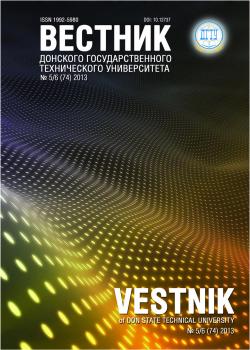Astrakhan State Technical University (Institute of Information Technology and Communications, Competitor)
from 01.01.2019 to 01.01.2020
Saint-Petersburg, Russian Federation
The work objective is to develop and investigate a method of choosing between manual and automated testing of the software product (SP). The proposed method principle consists in the or-ganization of the interaction routines between testers and pro-grammers who have completed the coding and unit testing process. A special questionnaire of 20 points which is filled in by a programmer is offered. Thus, the obtained, processed and analyzed answers make assertions about features of the prospective software product performance valuable for a tester. As a result, a general connection between the properties that determine the software utility and the testing method is specified. When functionality and (or) the reliability checking is requested, it is recommended to use the mixed testing – both manual and automated. When usability and (or) maintainability checking is requested, it is recommended to use the manual testing. When productivity and (or) portability checking is requested, it is recommended to use the automated testing. The methods are aimed at improving the testing quality on the basis of GOST RISO/IEC 9126-93.
manual software testing, automated software testing, semi-automated software testing, selection method.
Процесс разработки программного продукта (ПП) рассматривается как каскадная модель, работа в которой предполагает последовательное выполнение следующих этапов: анализ требований, проектирование, реализация, тестирование, внедрение, поддержка [1]. Данная модель обладает высокой степенью формализации, что делает ее применимой при управлении большими проектами. Она предназначена для использования на второй стадии тестирования, которая проводится в группах профессиональных тестировщиков по завершении работы программистов. В приведенном виде постановка задачи в научной литературе не встречается.
В основе работы — предложения по организации взаимодействия программистов и тестировщиков. Данное взаимодействие предлагается базировать на специальном простом вопроснике. С ним работают программисты, а затем ответы дополняют тестировщики.
1. Roebuck, K. System Development Life Cycle (SDLC). High-impact Strategies - What You Need to Know: Def-initions, Adoptions, Impact, Benefits, Maturity, Vendors. Brisbane: Emereo Pty Limited, 2011, 530 p.
2. GOST R ISO/MEK 9126-93. Informatsionnaya tekhnologiya. Otsenka pro-grammnoy produktsii. Kharakteristiki kachestva i rukovodstva po ikh primeneniyu. [State Committee for the Russian Federation for Standardization and Metrology. GOST R ISO/MEK 9126-93. Information technology. Software product evaluation. Quality characteristics and guidelines for their use.] Moscow: Izdatel´stvo standartov, 2004, 9 p. (in Russian).
3. Galimova, E.Y. Analiz algoritma prinyatiya resheniya ob avtomatizatsii testirovaniya programmnogo produkta s primeneniem svobodnogo programmnogo obespecheniya Selenium. [Analysis of decision algorithm on test automation using Selenium free software.] Teoriya i praktika primeneniya svobodnogo programmnogo obespecheniya : sb. tr. Ros. molodezh. konf. s el-tami nauch. shkoly. [Theory and practice of free software: Coll.of papers. Russian Youth Conf. with elements of sci. school.] Magnitogorsk: Nosov Magnitogorsk State Technical University Press, 2016, 223 p. (in Russian).
4. Gundecha, U. Selenium Testing Tools Cookbook. Birmingham: Pack Publishing, 2012, 309 p.
5. GOST 15971-90. Sistemy obrabotki informatsii. Terminy i opredeleniya. [GOST 15971-90. Information pro-cessing systems. Terms and definitions.] USSR State Committee on product Quality Control and Standards. Moscow: Izdatel´stvo standartov, 1991, 13 p. (in Russian).
6. Galimova, E.Y. Avtomatizatsiya testirovaniya raspredelennykh informatsionnykh system. [Test automation of distributed information systems.] Informatsionnye tekhnologii i ikh primenenie: sb. tezisov dokladov IV Vseros. internet-konferentsii. [Information technologies and their application: coll.of abstr.and reports IV All-Russian Internet Conference.] Irkutsk: MGLU EALI, 2016, 210 p. (in Russian).
7. Galimova, E.Y. Preimushchestva ruchnogo podkhoda k testirovaniyu programmnogo obespecheniya. [Advantages of manual approach to software testing.] Nauka v issledovaniyakh molodykh: mat-ly III Mezhdunar. nauch. foruma studentov, magistrantov, aspirantov.[Science in research of the young: Proc. III Int. Sci. Forum of students, graduate students and postgraduates.] Novosibirsk: Sibprint, 2013, 180 p. (in Russian).
8. GOST 28806-90. Kachestvo programmnykh sredstv. Terminy i opredeleniya. [GOST 28806-90. Software quality. Terms and definitions.] USSR State Committee on product Quality Control and Standards. Moscow: Izdatel´stvo standartov, 1991, 8 p. (in Russian).
9. Kosheleva, D.L. Opredelenie urovnya yazykovoy slozhnosti tekstov dlya izuchayushchikh pol´skiy yazyk kak in-ostrannyy: vypusknaya kvalifikats. rabota. [Determining the linguistic complexity level of texts for learners of Polish as a foreign language.] Moscow: Higher School of Economics, 2015, 73 p. (in Russian).
10. Galimova, E.Y., Kovalenko, A.N. Primenenie algoritma mnogokriterial´noy optimizatsii pri vybore mezhdu ruch-nym i avtomatizirovannym testirovaniem. [Application of multi-criteria optimization algorithm in selecting between manual and automated testing.] Molodezh´. Nauka. Innovatsii: sb. dokladov 63-y Mezhdunar. molodezh. nauch.-tekhn. konf. [The Youth. Science. Innovations: Coll. of reports 63rd Int. Youth Sci.-Tech. Conf.] Vladivostok: Meritime State University Press, 2015, vol. 1, 356 p. (in Russian).







